
Part 2: AI in the Product Management Lifecycle
Introduction
In our previous post, we explored the foundations of AI in product management. Now, let’s see how AI can enhance each stage of the product management lifecycle. From gaining initial insights to launching your product, AI can be a ‘productivity partner’ on your product management journey.
Research indicates that effectively using AI can help knowledge workers achieve goals 40% faster and improve quality by 25% according to Noy and Zhang (2023). With advancements since 2023, today’s AI models are even more powerful. However, it’s important to not only know how to use AI correctly but to properly understand product management.
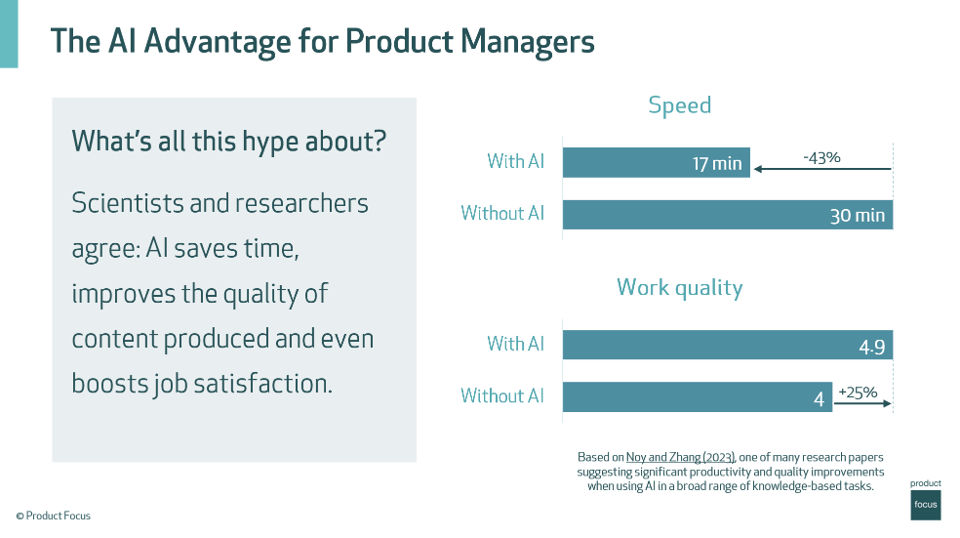
Figure 1 – Graph illustrating AI’s productivity impacts on knowledge-worker industries like product management
What can AI do for you?
At a simple level, AI can assist your productivity with a wide range of tasks, for example:
- Drafting a document or an email
- Analyzing data from your product, analytics, or financial data
- Analyzing and summarizing text from meeting transcripts, large reports, and customer reviews and feedback
- Brainstorming ideas as a collaborative partner
- Helping you to answer questions and learn new skills
- Translating information
- Converting speech to text to create notes and transcriptions
- Generating images, audio, and videos
The range of ways that you can use AI to help you is limited by your imagination.
“AI is the ultimate flexible productivity tool for product managers!”
AI in the Product Management Lifecycle
Product management encompasses a wide range of activities. The Product Activities Framework (PAF) is an excellent tool to explore how AI can assist in different areas:
- Strategic Product Activities (insight, analysis, direction) – to determine the right product for the business
- Inbound Activities – to help the business to deliver the product
- Outbound Activities – to help the business to sell the product
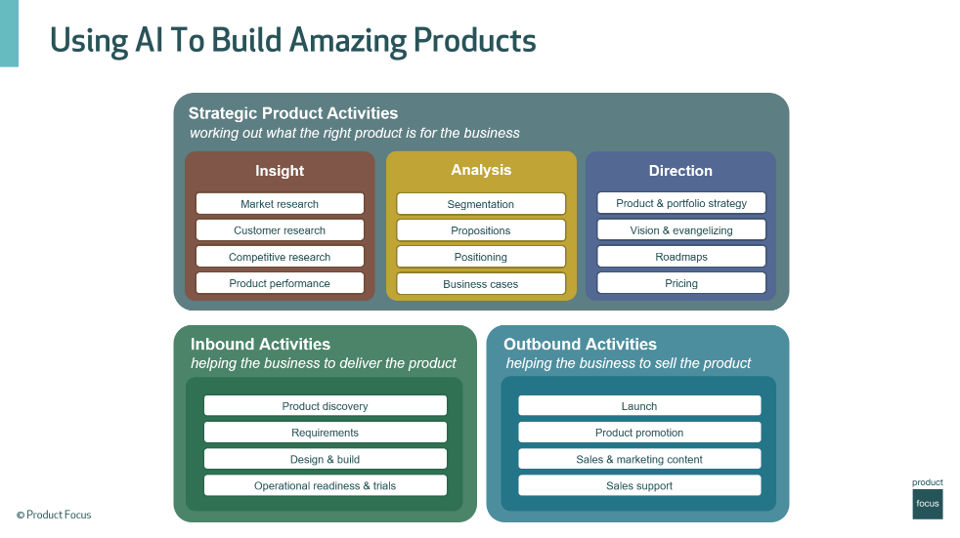
Figure 2 – The Product Activities Framework (PAF) from Product Focus shows the range of product management activities that need to take place in any company with products.
AI Prompts to try
In each area of the Product Activities Framework, we’ll illustrate in the accompanying diagrams some example prompts that you can try for yourself – on platforms like OpenAI ChatGPT, Google Gemini, or Microsoft CoPilot.
Watch and Listen: You can hear Cyril LeRoux talk through and illustrate some of these examples in his webinar.
AI is not infallible – exercise caution
It’s crucial to remember that AI is not infallible. Always double-check information and avoid blindly accepting or copy-pasting AI-generated content. AI tools should accelerate, not replace, critical thinking.
When using a large language model (LLM) for any sensitive or confidential information exercise caution:
- Be careful with proprietary or customer information
- Check your employment contracts regarding sharing information
- Ensure leadership is aware and approves of AI tool usage
- Consider using company-sanctioned AI tools or internal LLMs for secure usage
- Consult your legal team about using AI in your product or for your productivity
Remember, it’s crucial to ensure legal safety when using AI tools in a professional context.
“There is a balance to achieve: maximise the benefits of AI while minimizing legal risks.”
Strategic Insight: Gaining Domain Knowledge
Understanding the market, customers and competitors is essential and AI can assist in these areas.
Here we refer to the strategic activities in the dark red ‘Insight’ box in the upper left of the product activities framework.
Market Research
Researching the market can be time-consuming, and you could try accelerating your research with these ideas:
- Find and summarize latest market trends and reports
- Identify new and emerging companies in your sector
- Uncover relevant emerging technologies and innovations
Customer Research
Understanding your customer, their needs and preferences is essential to create a product that solves real problems and resonates. Some ideas to explore with AI:
- Find customer pain points, problems, and unsolved needs
- Understand customer preferences and behaviors
- Find popular review websites or forums used by prospects and customers
- Analyze customer feedback, reviews, and surveys to uncover sentiment and actionable insights
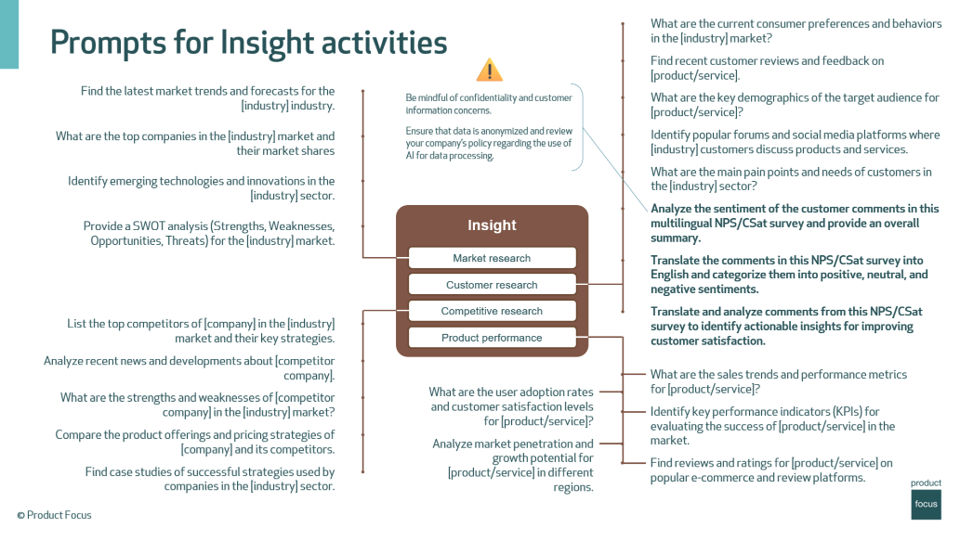
Figure 3 – AI prompts for use during Strategic Insight activities
Competitive Research
Let’s explore how you can harness AI for competitive insights while avoiding potential risks.
- Help identify main competitors quickly
- Analyze competitive offerings and positioning
- Analyze recent news, reports, and reviews of competitors
- Find and analyze case studies and effective strategies of competitors
- Accelerate overall research processes
Product Performance
When considering product performance, you might explore AI to:
- Analyze customer feedback for sentiment, complaints, frustrations, ideas or opportunities
- Suggest ideas for potential adoption, activation, or growth
- Find trends in KPI data e.g., in purchase or usage data
“AI is great for speeding up the data-intensive analysis tasks in research activities.”
Strategic Product Analysis: Exploring the solution space
When it comes to activities in strategic product analysis like segmentation, proposition development, positioning and business cases, the role of AI is not to think for you but to enhance your thinking process.
Here we refer to the strategic activities in the dark red ‘Analysis’ box in the upper middle of the product activities framework.
Segmentation
Customer segmentation is a crucial strategic activity because it allows product managers to tailor their offerings and marketing efforts to specific groups, maximizing relevance and impact. This enables companies to allocate resources more efficiently, develop targeted products, and create more effective marketing campaigns – ultimately leading to improved business performance.
In this activity, you might use AI to:
- Identify underserved niches
- Generate ideas for market segmentation
- Provide fresh perspectives on your market
However, it’s important to remember that these are just starting points; you’ll need to verify and refine any output that you get from using AI.
“The role of AI is not to think for you but to enhance your thinking process.”
Propositions
AI can be helpful in generating ideas for your value proposition, based upon the problems and needs of prospects in your target market segment.
For example, AI can be used to:
- Generate multiple proposition variants – to help you identify the best fit.
- Craft engaging elevator pitches – this can be particularly helpful if you’re working on crafting an elevator pitch or a value proposition statement.
- Refine your value statement to better match customer needs.
By asking AI to generate different versions of your value statement, you can explore various ways to position your product and determine which one resonates most with your target audience. This is especially useful if English isn’t your first language or if copywriting isn’t your strongest skill.
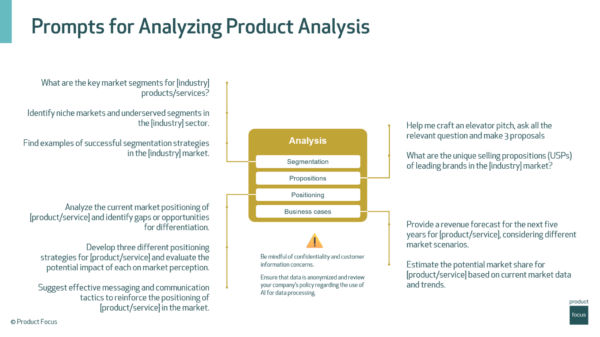
Figure 4 – AI prompts for use during Strategic Analysis activities
Positioning
Beyond crafting propositions, AI can also assist with the creative aspect of product positioning to your target market segments. Provided with enough contextual information, AI can help you to:
- Explore different conceptual angles and approaches for product presentation
- Brainstorm unique positioning strategies
- Identify resonant themes for your target audience
“AI-powered brainstorming can open up new possibilities for product positioning.”
Business Cases
The process of building a business case not only helps to test your logic and assumptions, sometimes it’s the key to unlocking business resources and approval for product development. AI can help you to build and test business cases, but its effectiveness will depend on the quality of data that you provide. Some types of information that might be helpful include:
- Historical company data
- Market research
- Competitor analysis
- Financial projections
- Industry benchmarks
Warning: Some of this information will be confidential – hence you need to proceed with caution (and with permission from your leaders / legal team) before supplying it to any AI model.
While AI can offer insights, such as different rationales for market segmentation or percentage applications, it’s crucial not to take these numbers at face value. Instead, use them as a basis for further analysis.
For instance, when using techniques like TAM, SAM, SOM—which stand for Total Addressable Market, Serviceable Addressable Market, and Serviceable Obtainable Market, respectively: AI can help you:
- Understand potential market size and share
- Provide percentage applications for analysis
- Provide different perspectives on how to transition from TAM to SOM – giving you a broader range of ideas to consider
Strategic Direction: Streamlining with AI
Setting strategic product direction is your compass for success – it helps align your team’s effort and product development with market needs and business goals.
Here we refer to the strategic activities in the dark blue ‘Direction’ box in the upper right of the product activities framework.
You might think of AI as your strategic thought partner or ally in this process, as you consider elements including product and portfolio strategy, strategic vision, roadmaps, and pricing.
Product and Portfolio Strategy
One common strategic tool useful in strategy formation is the SWOT analysis. This tool helps you to evaluate your Strengths, Weaknesses, Opportunities, and Threats. While a SWOT analysis is something most professionals have encountered, creating one that’s executive-ready can be time-consuming. With some practice, there is some potential timesaving and assistance you get can by using AI:
Traditional SWOT Analysis: 1 hour meeting; 3 team members; Total: 4 hours of company time
AI-Assisted SWOT Analysis: 10 seconds for initial draft; 15 minutes for team refinement; Result: 3+ hours saved!
“AI doesn’t just save time—it can introduce fresh ideas you might have missed.”
Crafting a Compelling Product Vision
A compelling product vision is essential as it guides the overall strategy. Without a clear vision, determining the path forward becomes challenging. In many cases, teams may struggle to articulate a strong vision for their product. AI can assist you by:
- Generating multiple vision statements
- Offering diverse perspectives and trade-offs
- Capturing and integrating core concepts quickly
Reviewing several vision options allows for a more comprehensive evaluation, helping to identify the most effective elements for the final vision. Using AI to draft multiple ambitious product vision variants can shorten the time to test, review, and refine them.
Result: Less time wordsmithing, more time refining the vision and aligning with your team.
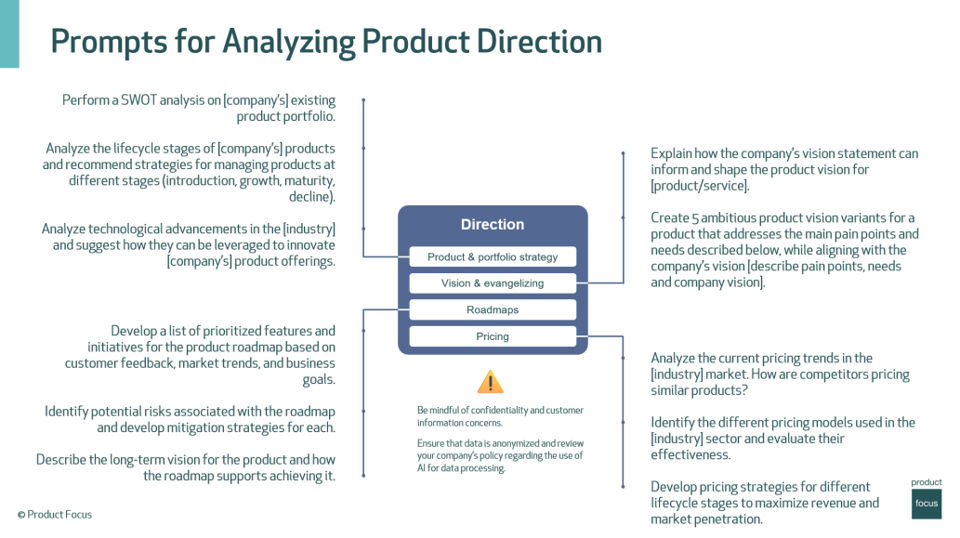
Figure 5 – AI prompts for use during Strategic Product Direction activities
Roadmaps
AI is also valuable in scenarios where prioritization is required based on customer feedback, especially when dealing with multilingual feedback.
AI can help:
- Translate and analyze multilingual customer feedback
- Extract key themes and needs in feedback
- Suggest features and fixes based on customer feedback
- Suggest prioritized order for inclusion on a roadmap with rationale
You should use AI-generated information to assist your thinking and to give ideas, not as the final product.
Pricing
In terms of pricing, while AI may not deliver direct solutions, it can inspire creative approaches by examining various pricing strategies. This expands the range of possibilities, enabling the exploration of different methods and perspectives.
AI can help:
- Identify and analyze pricing strategies in the market
- Explore the pros and cons of different strategies
- Develop different pricing strategies aligned to different lifecycle stages
Inbound Activities
We now turn our focus from building the right product (through careful strategic product analysis activities), to Inbound Activities focused on building and delivering the product right, to delight customers.
Here we refer to the activities in the dark green ‘Inbound’ box in the lower left of the product activities framework.
Discovery
If we’ve done a great job in understanding customer pain points and selecting the right problems to solve, we need to turn our attention to solving the right problem in the best way to delight customers.
As we explore our possible solution space through discovery, we need to ensure that the features being considered will hit the mark. Here’s a few ways that AI might help:
- Generating a list of ODI (outcome driven innovation) outcomes / JTBD (jobs to be done) in connection with use of the product
- Brainstorming innovative product features and concepts, or unique combinations
- Creating surveys, questionnaires, and interview guides – AI can expedite the creation of these tools, generating interview guides and surveys much faster than traditional methods. Even with an existing survey, AI can help check for unintended biases or clarify the language.
Requirements
When it comes to identifying and generating requirements, AI is a surprisingly effective PM ally. Here’s a few things to explore when using AI for requirements:
- Identify major themes or epics based on high-level functionality or user needs
- Break down epics into smaller manageable user stories
- Draft user stories and suggest acceptance criteria
- Write draft technical specifications
- Flag potential gaps, inconsistencies, or dependencies
For Gherkin-style exception criteria (given, when, then), AI can generate a comprehensive list of scenarios, often anticipating details that might otherwise be overlooked, saving considerable time.
While it’s important not to rely solely on AI and to review its output critically, it can provide a solid starting point to accelerate your progress.
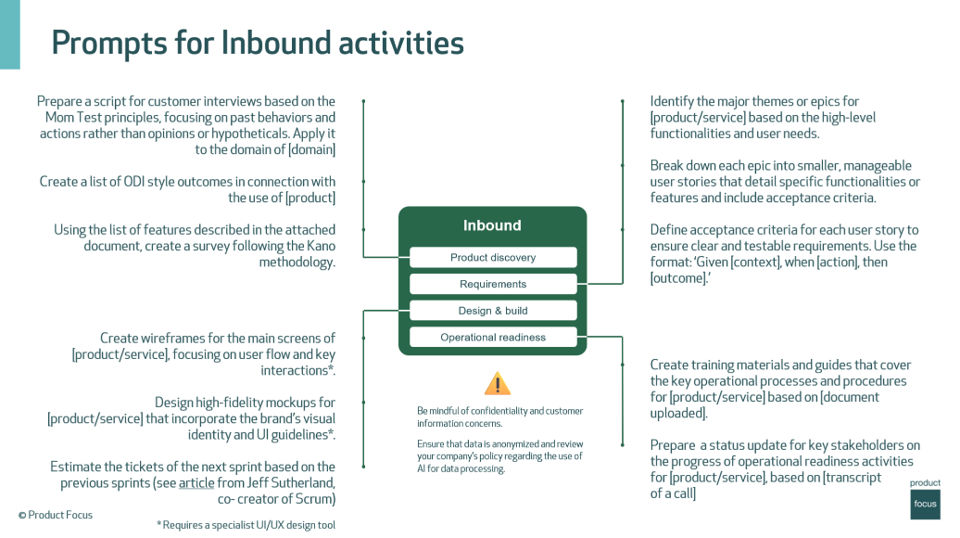
Figure 6 – AI prompts for use during Inbound activities
Design and Build
Wireframes and designs
Creating designs/wireframes is an area where many chat-based AI systems have traditionally struggled. However, companies like Figma are developing powerful tools that can generate visual designs and layouts based on text prompts. These tools are particularly useful for standard elements, like a product page or a “my account” page. For instance, asking for a product page for a shoe company or a “my account” page for a financial organization can yield results. These tools are rapidly evolving, so they’re worth exploring to see what’s possible – here’s an interesting demo that illustrates using Figma.
There’s also an amazing demo of Claude.ai being used to generate a design and application, just by using a screenshot as the starting input. No doubt, this ability will increase the rate of innovation, prototyping and development in many industries.
Sprint estimates
You can also use AI to estimate tickets in the next sprint based on your previous sprint estimates (see this article from Jeff Sutherland).
Operational Readiness
Training materials
Finally, if you need to create training materials for operations or customers and there is already a substantial amount of content, such as a manual, AI can take this information to write training manuals or to suggest the structure of a training course.
With tools like Microsoft Copilot integrated into PowerPoint and other office products, it’s now possible to efficiently create individual slides or whole presentations on existing documents. You can find a short explanation and walkthrough of using Copilot here.
Operational readiness checklists and updates
You can experiment in asking AI to create you an operational readiness checklist that’s typically required in your industry/product category – or one that’s based upon previous checklists that you might have discovered in your business.
Also, if you’ve got some notes from an operational readiness meeting (perhaps the automated transcript from a video call of the meeting), you can explore using this to provide an update for stakeholders on progress and operational readiness status.
Outbound Activities
Outbound activities are needed to market and sell the products that you build. Here you can use AI to be your thinking partner, to help you consider everything you might need to do.
Here we refer to the activities in the light teal ‘Outbound’ box in the lower right of the product activities framework.
Launch
By providing some context to the AI about your product or service, industry, business and any previous plans or checklists, you might try to:
- Create a launch plan – with key tasks and milestones
- Create a launch checklist – of everything that needs to be accomplished
- Identify potential risks and challenges during launch, with potential mitigations
Product Promotion
Promoting your product to the right customers through the right channels is essential. Some things you might try using AI for:
- Design a multi-channel marketing campaign
- Identify influencers and partners who might help reach your target prospects
- Create a detailed social media plan

Figure 7 – AI prompts for use during Outbound activities
Sales and Marketing Content
Creating sales and marketing content is one of the strong areas for generative AI. You might experiment and try:
- Create emails and email templates – provide the AI with a call to action, the audience, the tone of voice and even past emails as inspiration
- Website and advertising copy – you can generate copy for almost anything, in any tone of voice, using appropriate language to appeal to your target demographic and channel of delivery.
- Competitive battlecards are a tool that you can help your sales team to position your product and defend against your competitors in customer discussions – you can provide the AI the source links and information about your product or service and your competitors’, like brochures, websites, competitive analysis, analyst reports and more.
Sales Support
AI can help with your sales enablement activities, like creating sales playbooks, designing training workshops, or sales presentations.
Key Takeaways
- AI can assist you at various stages of the product management lifecycle
- Always verify AI-generated information and use it as a starting point
- Balance AI usage and productivity gains with human expertise and judgment
In the final part of our series, we’ll explore the evolving world of AI interaction and essential safety considerations for product managers.
Learn more
This blog series (part 1, part 2, part 3) illustrates some important lessons from our webinar with Cyril Le Roux, a Product Focus Senior Consultant. He has over 20 years of product management experience, mainly across Telecoms, eCommerce, Marketplaces (in real estate, trades, and print on demand), and FinTech.
Don’t forget to register for free, to receive access to the Product Focus Toolbox – get access to an online curated library of world class resources for product managers: whitepapers, infographics, journals, and more…
Ideas and feedback?
Please let us know how you’re using AI in your product or product management activities – what’s working, what’s a challenge and where are you finding success?


Leave a comment